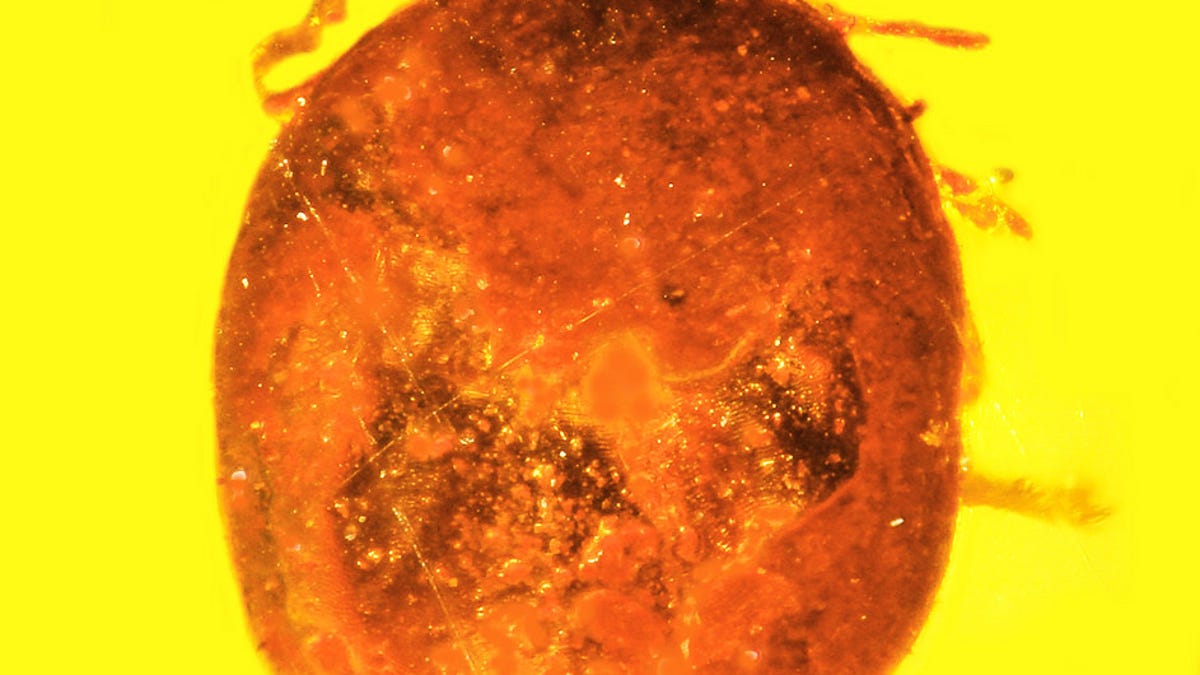Ancient monkey blood, and the fossilized tick that preserved it
Monkey business from 20-30 million years ago likely led to the preservation of what's said to be the oldest mammalian blood ever found.
Amber, the gift that keeps on giving insights into ancient life forms, has handed us yet another rare preserved specimen -- fossilized red blood cells from an ancient monkey.
The amazingly detailed cells, believed to be the oldest fossilized mammal blood found yet, were discovered in a blood-engorged tick with two tiny holes in its back. The holes let blood leak out as the arachnid got stuck in flowing tree sap that later fossilized into amber.
But how did the holes get there?
Amazingly detailed fossilized red blood cells.
Paleobiologist George Poinar, a professor emeritus in the College of Science at Oregon State University, believes a monkey pricked the tick's shell when it picked the pest off another monkey during a grooming ritual 20-30 million years ago in the forests of what's now the Dominican Republic.
He details the find in the current issue of Journal of Medical Entomology.
If fossilized monkey blood isn't enough to grab you, the find also represents the only known fossils of a microscopic parasite, Babesia microti, which infects the blood cells of humans and other animals and can cause malaria-like symptoms.
The trapped parasites stand out clearly within the red blood cells.
"The life forms we find in amber can reveal so much about the history and evolution of diseases we still struggle with today," Poinar said in a statement. "This parasite, for instance, was clearly around millions of years before humans, and appears to have evolved alongside primates, among other hosts."
In other words, ticks have been annoying other creatures for many many years.
Poinar, who inspired the science in "Jurassic Park," has for years been studying a trove of amber samples collected during a 1986 trip to a Dominican Republic amber mine. Other treasures from that collection include plant fossils that go back at least 15 million years and relate to a modern pesticide.
Tech Enabled: CNET chronicles tech's role in providing new kinds of accessibility.
Crowd Control: A crowdsourced science fiction novel written by CNET readers.


